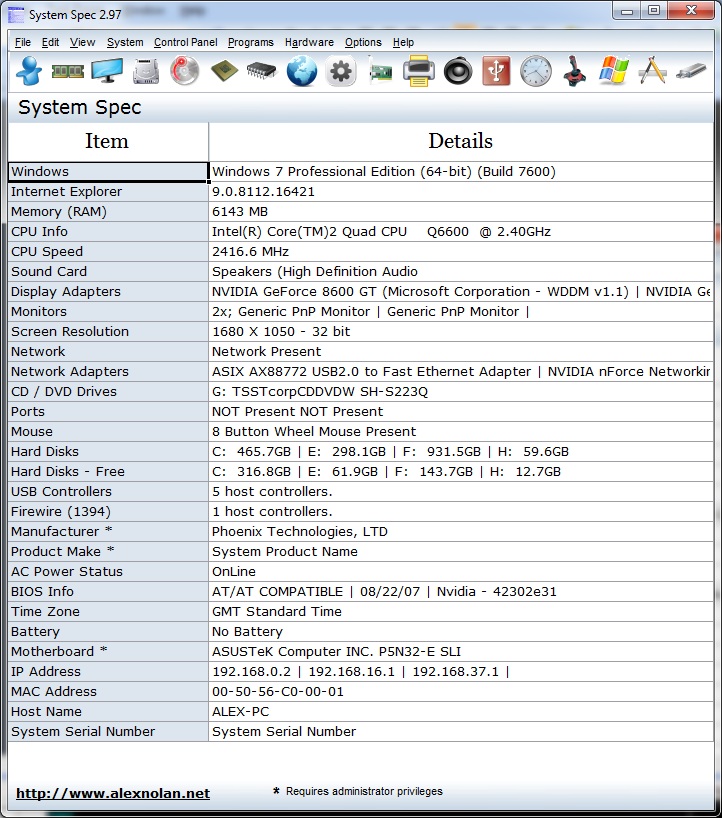
Smart Utility Serial For Mac
Click to expand.That is only about three years of (continual) use. What model are your mechanisms? If a drive is marked 'Failing', you should make a backup (clone), and make routine, incremental backups. I also advise against using one that is failing as a boot device. A failing drive can run another three years, or another three hours. It depends on the cause of the failure.
SMART Utility for Mac also allows running a drive’s built in self test, which can also indicate malfunctions on the drive. SMART Utility is different from other drive utilities, such as Disk Utility, which only read the overall SMART Status. SMART Utility. SMART (Self-Monitoring, Analysis and Reporting Technology) is a monitoring system that's embedded in hard disk drives and solid-state drives and identifies potential hardware failures. Still, you need to install a specialized utility to reveal the information that's being collected by the SMART system.
If these are just standard desktop drives (not enterprise rated drives), then you can anticipate they are ending their lifespan. The MDD uses ATA/100 (PATA) drives. When you replace these, it would behove you to buy SATA drives and SATA adapters, as ATA/100 drives are more than twice the price per GB: In fact, you can buy enterprise-rated drive for less/GB than new/NOS PATA drives. You can also use a CF to PATA adapter and a CF card, for a boot volume, if you want a NAND solution.
SMART Failing drives will also cause problems if configured as RAID, depending on the RAID system, which although not a problem for your MDD, is important to remember. Plain text editor for mac. An Apple XRAID will refuse to use any drive that is 'failing'. Click to expand.Yeah, I was also familiar with Smart Reporter but it didn't show power on hours. When I bought this PowerBook I was amazed how well preserved it is, then suddenly I realised that hard disk does keep track about how long it has been powered on and since this is stock drive it will give some indication about the usage of this machine. Also I am still battling with that battery issue, if the battery has just died because it has been left empty for too long then there is a change that the machine is fine. 159 load cycles is also not that much for 9 year battery.
That is only about three years of (continual) use. What model are your mechanisms? If a drive is marked 'Failing', you should make a backup (clone), and make routine, incremental backups. I also advise against using one that is failing as a boot device. A failing drive can run another three years, or another three hours. It depends on the cause of the failure. If these are just standard desktop drives (not enterprise rated drives), then you can anticipate they are ending their lifespan.
The MDD uses ATA/100 (PATA) drives. When you replace these, it would behove you to buy SATA drives and SATA adapters, as ATA/100 drives are more than twice the price per GB: In fact, you can buy enterprise-rated drive for less/GB than new/NOS PATA drives. You can also use a CF to PATA adapter and a CF card, for a boot volume, if you want a NAND solution. SMART Failing drives will also cause problems if configured as RAID, depending on the RAID system, which although not a problem for your MDD, is important to remember.
An Apple XRAID will refuse to use any drive that is 'failing'. Click to expand.The drive with the 9 reallocated sectors is my boot drive. It is a 300GB Seagate 7200rpm ST3300631A.
The second failing drive is my Linux drive. It is also a 120GB Segate 7200rpm ST3120025ACE. I received both drives in used systems a few years ago. I have Superduper on an automatic schedule to clone my boot drive twice a week to a 200GB Maxtor 6L200P0.
I purchased it new quite a few years ago. It only has 1000 hours on it. I don't bother backing up my Linux drive because I only use it to access online financial records and make secure online transactions; I don't keep any permanent data on it. If it dies, I can easily reinstall it on a new drive. Your advice to switch to SATA is well taken. I have been recently thinking about how to make that happen. The recent thread covering flashing a PC SATA card was promising, but I don't have access to a PC for the flashing, so it won't work for me.
I've looked into adapters, but my understanding is one cannot boot from them. I would like the ability to boot from SATA. I may end up springing for the Sonnet/Seritek card. I've also been considering switching to a G5 setup. The are getting pretty cheap on my local Craigslist. Decisions, decisions.